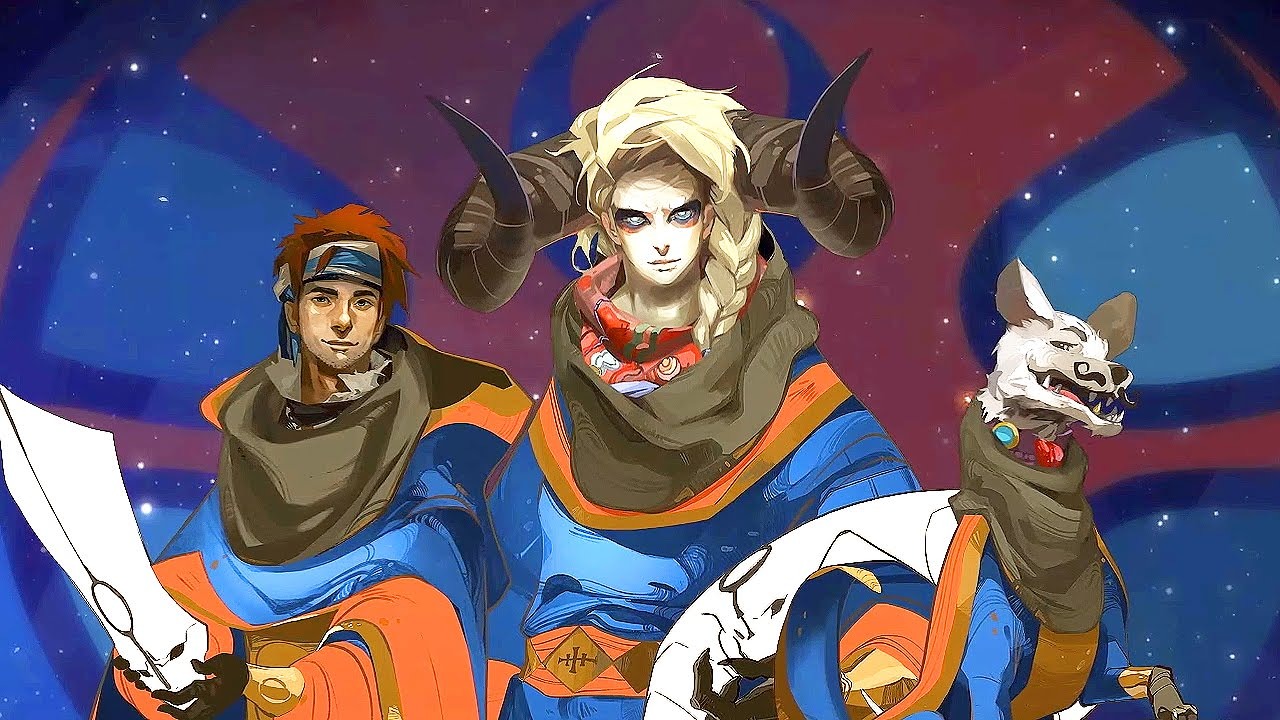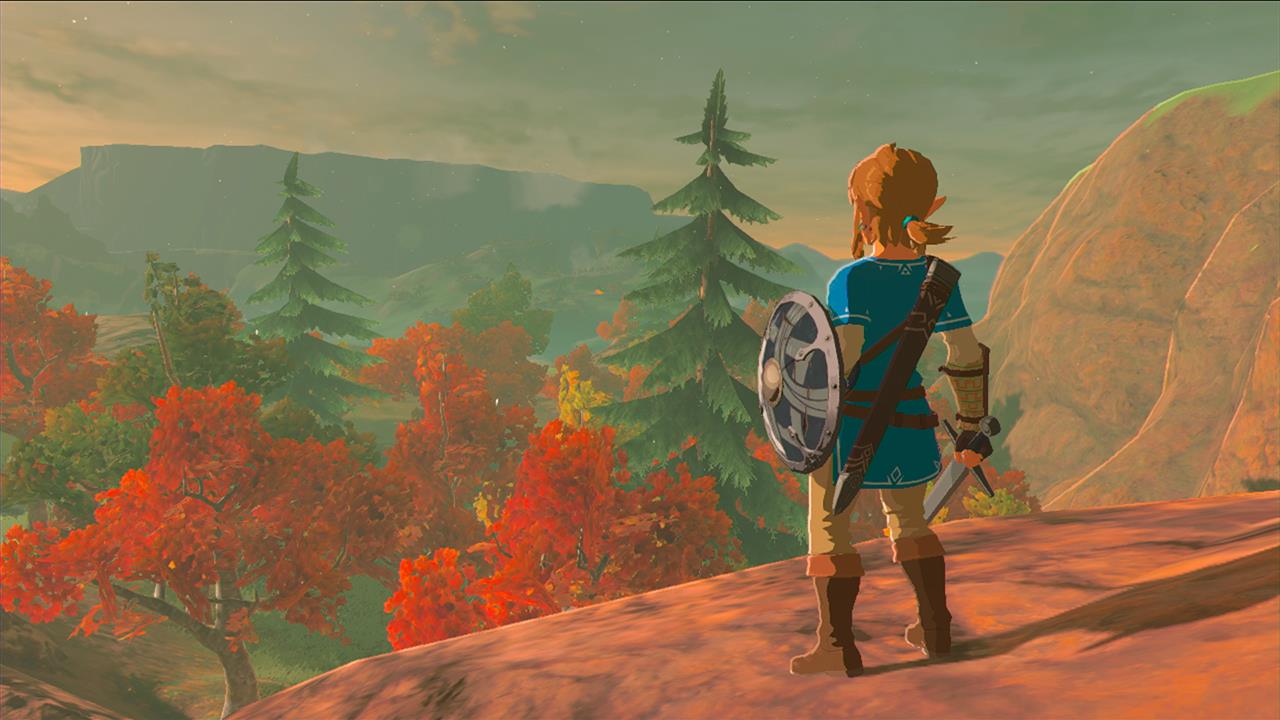
Minor Spoilers ahead for Pyre
In life we fail. We fall. Mistakes are made, and no amount of regret or remorse can take away the actions we take, regardless of intentions. As a very wise cartoon man once said: “Whatever happens, happens.” Failure is a hard truth we all must swallow at some point.
Indie game studio Supergiant Games might know a thing or two about hard truths. In 2014, their second game Transistor was released to critical acclaim and tremendous sales success, earning over one million sales by the end of the following year. With this title and its 2010 Game of the Year contender Bastion under the studio’s belt, it’s safe to claim that Supergiant is practically the scale by which all indie games are measured. The hard truth was people were watching carefully, awaiting Supergiant’s next big indie blockbuster. If I were in their shoes, I’d be more than a little nervous.
So the studio, not content to make the same game twice, went back to the drawing board and brainstormed ideas. One of the more interesting ideas was centered around the hard truth of failure.
The concept of a “failure state” in gaming is an ancient one. In Pong, one side had to lose. In Pac-Man, a Game Over would force arcade-goers to feed machines more of those sweet, sweet quarters. The infamous Souls series won its reputation by getting players very familiar with death. (Very.)
Only recently has there been a growing trend in removing failure states from games… or at least rewriting the rules on them. The adventure game Heavy Rain featured not game over screen, only a story that continued to unfold whether the playable characters survived the journey… or didn’t. Most puzzle games only truly “fail” when a player decides to give up on a brain-teaser in frustration. Controversial “walking simulators” like Dear Esther or Firewatch are basically impossible to lose, only asking the player to experience the story by traveling from point A to point B. For years, developers have been experimenting and warping the rules of conventional gaming, with mixed results.
Which brings us to Supergiant’s newest title, Pyre. Pyre’s concept evolved from the studio’s idea to rewrite the conventions of failure in games. Would it be possible to create a game where defeat can happen at any time, and players are forced to face the consequences of their actions rather than be given infinite chances, as is the norm? Well, it should be. Reality is full of unchangeable failures, yet life goes on. With that in mind, the team devised a title crafted around this unique concept to modern video games, a non-violent competition between factions in which failure resulted not in character death, but in lessons to be learned for the next bout. Sound familiar? Think about it. Millions of Americans watch it on TV every week.
Pyre is, for all intents and purposes, a fantasy sports RPG. You play as an un-named exile, banished from his or her homeland for the unforgivable sin of literacy. You are rescued by a crew of fellow exiles who, upon learning of your unique skill, begin putting you to work deciphering a mysterious book detailing a path to freedom from eternal exile. Soon, this path is revealed to be attainable only through “The Rites,” thrusting you into an epic quest to travel the land, gather companions, and win enough Rites to earn your freedom.
The Rites themselves make up the bulk of gameplay. Players select a team of three party members to participate in a competition that can only be described as a cross between blitzball, basketball and lacrosse. The rules are simple: grab the orb at the center of the arena and use teamwork to dunk it into the opponent’s goal (their titular Pyre) enough times to snuff it out. Achieve this before your opponent does the same to your Pyre, and you win. But as with all great sports, the simple rules can make way for some truly impressive tactical depth. Each and every exile you pick up on your journey has his or her own specializations , abilities and upgrades for you to tinker with, as well as a slot for equipment you can buy along the way. I won’t describe any of the options available to you for fear of spoiling surprises, but the customization of your three-member team goes far beyond big/slow/strong characters versus small/fast/fragile combatants.
And said combatants are what make up the meat of the experience. Like a great Bioware game, Pyre is full of memorable, distinct allies and adversaries that are full of both personality and ambitions, which delightfully your character will keep record of in his or her journal as your observations increase. This information-gathering is somewhat optional… but choosing to forego building a bond with your companions will also rob the player of the high stakes at hand when carrying out The Rites. As mentioned above, each encounter you have is a non-lethal ball game, but while life and limb of each character are not in jeopardy, their freedom most certainly is. Victory in each Rite will bring your companions closer to “enlightenment,” which in turn will eventually give you, the player, an opportunity to free one of your friends from the desolation of exile. This will allow your ally to achieve the dream you so desperately want to give them… but will cause your team to lose both a beloved friend and valuable combatant for the remainder of them game (and giving the player the ultimate choice on who stays and who escapes just rubs more salt in the wound). On the other hand, losing in a Rite will increase your opponent’s chance of escaping the wasteland, never to be encountered again. No matter how well or how poorly you perform in the game, a friend or an enemy will return home, and the story’s ultimate conclusion will be twisted to reflect your decisions one way or another.
This is far from a convenient choose-your-own-adventure gimmick, however. Your crew will go up against a variety of different teams of three, each with their own team name, history, emblem, color, captain, quirk, and jamming theme song. Enemy captains are given personalities and motivations just as compelling your companions’, and each adversary will likely hold some form of grudge against your team… or a teammate. The game records your win/loss ratio with each team, and like any good sports game, each encounter provides an opportunity for some compelling rivalries to emerge.
I’m going to give a slightly heavier spoiler warning here to give you one of my more interesting moments during one of these rivalries (so feel free to skip this paragraph if you want as little story spoilers as possible). Roughly midway through the game, my team was sitting pretty. We were undefeated, and ready to send another deserving ally back home. Our rival for the deciding match was a group of ex-terrorists, one of which was an estranged sibling of a different teammate bent on returning home to continue wrecking havoc on the homeland who’d exiled her. Despite my opponent’s relative on our team feeling torn about her sibling’s chance at freedom, we battled them as fiercely as ever… only to suffer our first loss at this critical juncture. Our enemy was released. My friend was forced to continue her unjust sentence because of my failure. The devastating effect of one simple loss was shockingly palpable… and eventually forced me to give up my own chance at freedom. Pyre is filled with situations such as this, each with its own triumphs, tragedies, and everything inbetween.
Pyre’s aesthetic is a beauty to behold, easily the best-looking game to be released this year (and when you’re going up against a game like Persona 5, that’s a very bold statement indeed). Every art asset is gorgeously detailed in vivid watercolor sketches and playful animations. Characters bounce about the battlefield with their own sleek personality. And those environments? Any fan of the popping, bright art styles found in Pyre could easily frame any of those wide, sweeping landscapes on their wall. Plus, I don’t know of another title that better captures the essence of cartoon, colored fire.
The game is bursting with lore at every turn, giving players an obscene number of opportunities to study the histories of this creative, Middle Eastern-flavored culture. This may not appease every gamer (expect to do some reading… a lot of reading), but even to the casual visitor to Pyre’s world, understanding the unfolding events can be as simple as hovering the cursor over a highlighted word of interest (I seriously wish more lore-heavy RPGs would do this sort of thing). On the other side of the spectrum, the hardcore historians in the audience are provided a vibrantly detailed in-game book that is gradually filled with pages upon pages of backstory as the player advances through the game.
Failure is not the end in the world of Pyre, but the effects of loss are no less devastating. By the end of your lengthy journey through the Downside, each of the vibrant characters you meet will be different in some way, and this is reflected in both the epilogue and end-game minstrel song that sings over the credits (once again composed by the fabulous Darren Korb). Like the many, many games that have tried this before, Pyre turns into a tale that is truly yours in the end, one that I shan’t forget anytime soon.
For an experience that can harbor so much bitter failure, I believe there can be no greater triumphant success for Supergiant.
References used:
http://www.gamasutra.com/view/news/271161/How_Supergiant_Games_aggressively_prototyped_its_way_into_Pyre.php
